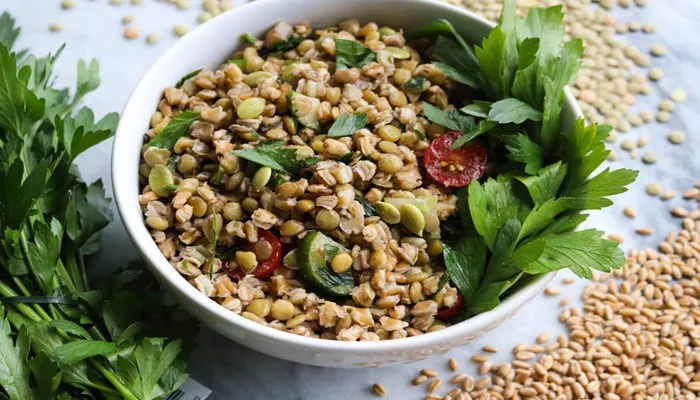High blood pressure, or hypertension, is a common condition that affects millions worldwide. Managing high blood pressure often involves dietary modifications, and incorporating the right types of legumes, or ‘dal,’ into your diet can be beneficial.
This article delves into how various types of dal can influence blood pressure levels, providing insights into their nutritional benefits and how they can be part of a heart-healthy diet.
Understanding High Blood Pressure
High blood pressure occurs when the force of the blood against the artery walls is consistently too high. This condition can lead to serious health problems, including heart disease, stroke, and kidney damage. It’s often termed the “silent killer” because it may not present noticeable symptoms until significant damage has occurred.
The Role of Diet in Managing Blood Pressure
Diet plays a crucial role in managing blood pressure. Consuming foods rich in potassium, magnesium, and fiber, and low in sodium, can help regulate blood pressure levels. Legumes, including various types of dal, are particularly beneficial due to their high fiber content and essential nutrients.
see also: Why Would Blood Pressure Drop When Standing
Which Dal Is Good For High Blood Pressure?
Dal, or lentils, is a staple in many diets, especially in South Asian cuisine. It comes in several varieties, each offering unique health benefits:
1. Red Lentils (Masoor Dal)
Nutritional Profile: Red lentils are rich in protein, fiber, and various minerals, including potassium and magnesium. They are also a good source of iron and B vitamins.
Benefits for Blood Pressure: The high fiber content in red lentils can help reduce cholesterol levels, which is beneficial for heart health. Additionally, the potassium in red lentils helps counteract the effects of sodium, aiding in the management of blood pressure.
Preparation Tips: Red lentils cook quickly and can be used in soups, stews, and curries. For best results, combine them with vegetables to increase the nutrient profile of your meal.
2. Green Lentils (Sabut Moong Dal)
Nutritional Profile: Green lentils are packed with protein, dietary fiber, and essential nutrients such as folate, potassium, and iron. They also contain antioxidants that help reduce inflammation.
Benefits for Blood Pressure: The potassium and magnesium content in green lentils help to relax blood vessels and improve blood flow, which can contribute to lower blood pressure. The fiber also supports heart health by managing cholesterol levels.
Preparation Tips: Green lentils maintain their shape when cooked, making them ideal for salads and side dishes. They can also be used in soups and stews.
3. Black Lentils (Urad Dal)
Nutritional Profile: Black lentils are high in protein and fiber and contain a range of vitamins and minerals, including potassium, magnesium, and iron.
Benefits for Blood Pressure: Black lentils are particularly beneficial for heart health due to their high fiber and potassium content. They can help lower blood pressure by improving blood vessel function and reducing cholesterol levels.
Preparation Tips: Black lentils have a rich, earthy flavor and are often used in Indian dishes like dal makhani. They can also be added to soups and stews.
4. Chickpeas (Chana Dal)
Nutritional Profile: Chickpeas are a versatile legume rich in protein, fiber, and essential nutrients such as iron, magnesium, and folate.
Benefits for Blood Pressure: The high fiber and potassium content in chickpeas help manage blood pressure levels.
Additionally, chickpeas have a low glycemic index, which helps in maintaining stable blood sugar levels.
Preparation Tips: Chickpeas can be used in a variety of dishes, including salads, stews, and hummus. They require longer cooking times but can also be prepared in a pressure cooker for convenience.
Incorporating Dal into Your Diet
Incorporating dal into your diet is relatively straightforward. Here are some tips for making the most of these nutritious legumes:
1. Balanced Meals
Combine dal with vegetables and whole grains to create a balanced meal that supports overall health. This combination provides a range of nutrients and helps in managing blood pressure.
2. Cooking Methods
Opt for cooking methods that preserve the nutritional value of dal. Steaming, boiling, and using a pressure cooker are effective methods. Avoid deep frying or using excessive oil.
3. Portion Control
While dal is healthy, it’s important to consume it in moderation. A typical serving size is about one cup of cooked dal per meal. Excessive consumption can lead to an imbalance in nutrient intake.
Additional Dietary Considerations
While dal can be beneficial for managing blood pressure, it’s also important to consider other dietary factors:
1. Sodium Intake
Reducing sodium intake is crucial for managing high blood pressure. Avoid adding excessive salt to your dal and opt for herbs and spices for flavoring.
2. Overall Diet
Ensure that your overall diet includes a variety of fruits, vegetables, lean proteins, and whole grains. A well-rounded diet is key to effective blood pressure management.
3. Regular Monitoring
Regular monitoring of blood pressure levels is essential to assess the effectiveness of dietary changes. Consult with a healthcare provider for personalized advice and adjustments.
Conclusion
Dal is a nutritious and versatile food that can play a significant role in managing high blood pressure. By incorporating different types of dal into your diet, you can benefit from their rich nutrient profile and support your cardiovascular health.
Remember to balance your meals, watch your sodium intake, and maintain a diverse and healthy diet for the best results in managing blood pressure.

